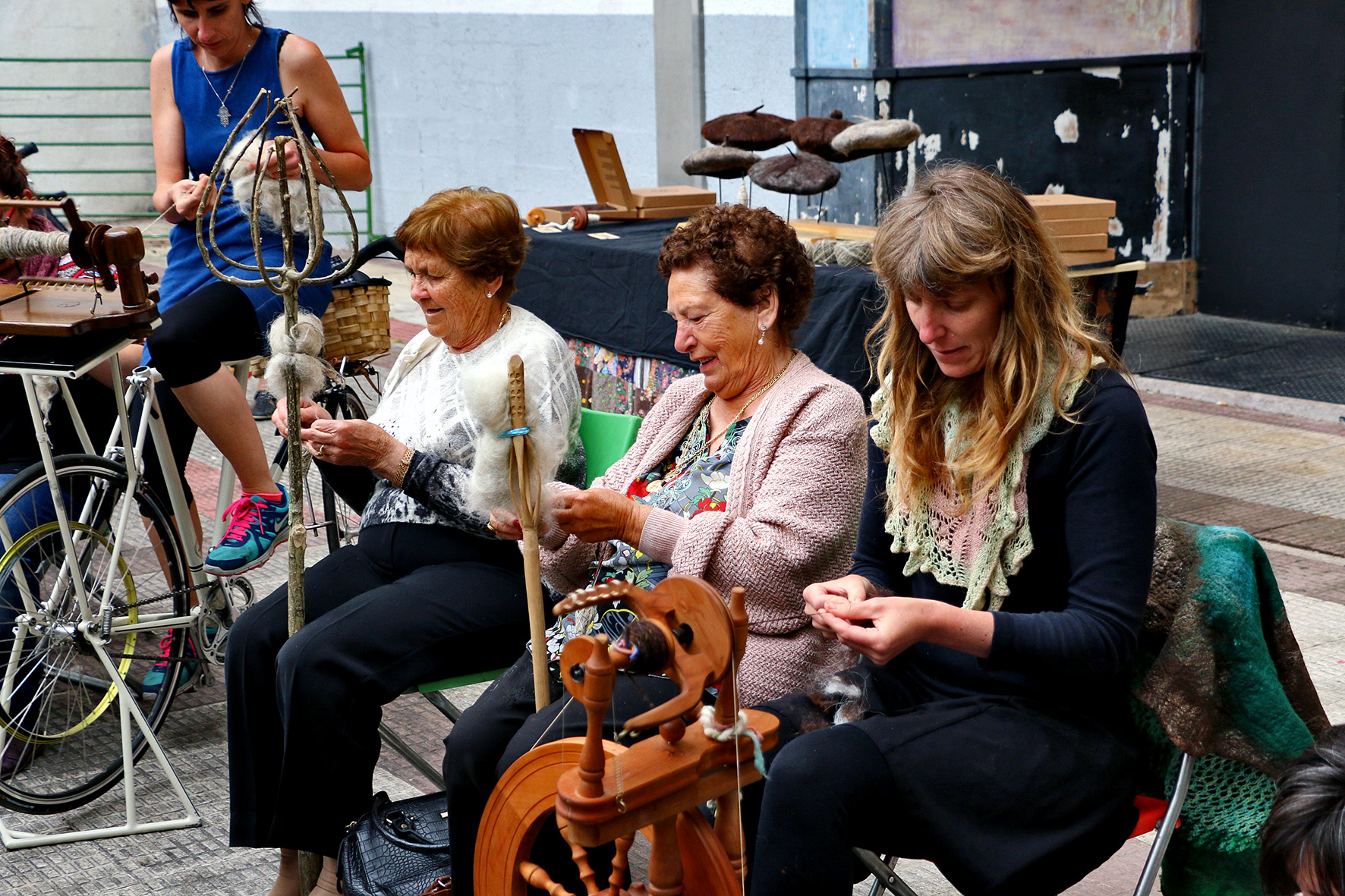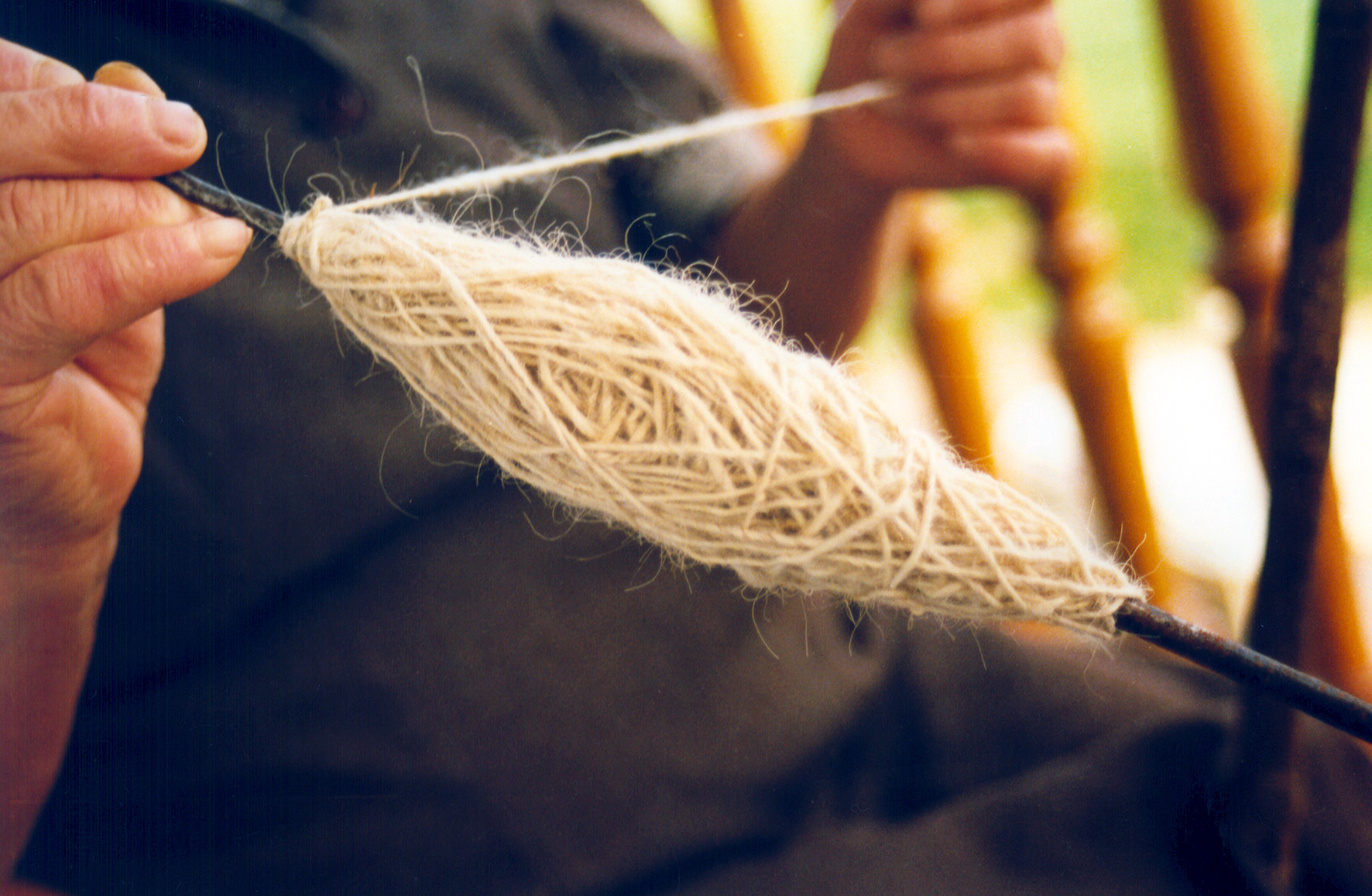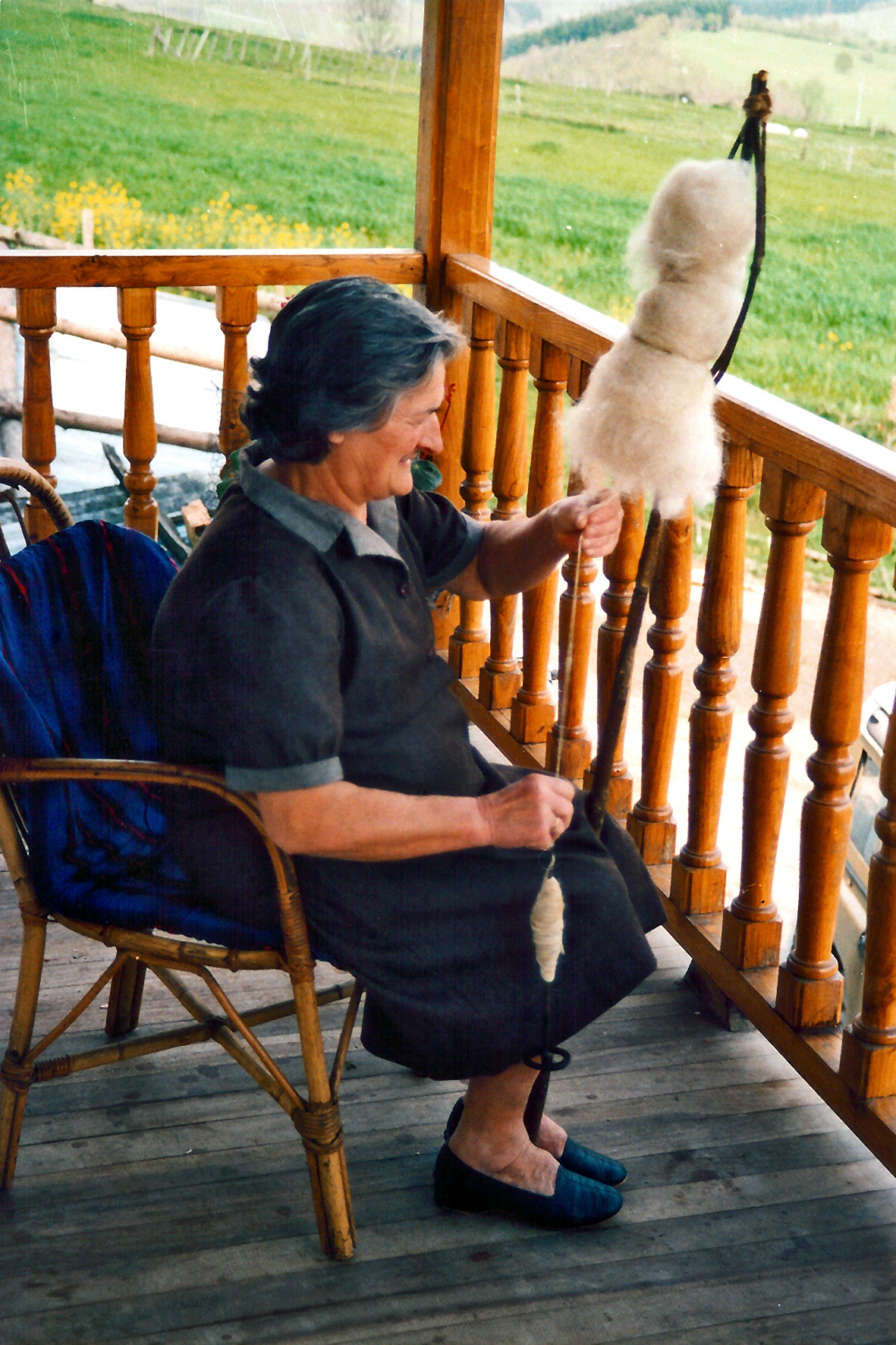Basque ethnography at a glance
Until well into the 1960s it was customary for local shepherds to keep a few shorn fleeces, or mantas, from the sheep for their own use in the farm. The wool from the fleeces was used as mattress filling and for spinning it into yarn and knitting yarn into clothing, mostly socks, laces for abarcas —rustic leather lace-up shoes— and waistcoats.
The manufacturing process of wool started with the cleaning and scouring of the sheep fleeces. This was done in the house, the river or a nearby spring. First, the wool was pulled apart by hand to pick out heavy dirt stuck to the fleece (gorse prickles, scraps of grass…). After this initial step, the raw wool was placed in a zinc tub, soaked in warm water and scored clean with Chimbo —a well-known brand— soap. The washed wool was then allowed to dry on a bush of thorns close enough to the farmhouse.
When the wool was well dry, it was collected on a piece of cloth and the four ends of the cloth folded. So it was stored until the octubrada, since it was around October and onwards women took to spinning for woollen yarns. The spinning of wool was originally done by two rudimentary devices, namely distaff and spindle.
Made by the men of the household from a branch of willow or holly, the distaff consisted of a staff about 1 m long and 2 cm thick, with the rack or rocadero on which to pin the rove of loose, fluffy wool to be spun, called copo, on its cleft end. The rack had two cuts and a wedge placed in each of them, which was removed after some time, once the wood was fully dried, showing its typical bulgy shape.
Commonly used until the last third of the 20th century, the spindle was just a small iron rod usually forged in the Valley. With lengths ranging between 30 to 40 cm, its higher, thicker end carved with spiral grooves, it had a whorl at the bottom approximately 3 cm in diameter.

Gathering of spinners from Euskal Herria in the neighbourhood of Ambasaguas. Artzai Topaketa, 2016. Miguel Sabino Díaz.
Before the threading, the fibres of wool to be rolled into yarn were straightened and combed, a task known in Carranza as escarmenar. The spinning of wool began by dressing the distaff. A bundle of fibres was wrapped around the rack and tied in place while holding the distaff at a slight angle between the knees. Next, the spinner teased out a few fibres from the end of the rove with the left fingers and twisted them, thus weaving the thread. A whirling motion was given to the spindle with the right hand and the twisted yarn was then wound up on to it and securely fastened around the spiral notches. Another sliver was drawn out by the thumb, forefinger and middle finger of the left hand, the spindle given another twirl and the yarn wound on it, and so on until spinning a full spindle. The finished yarn was removed from the spindle and manually curled up into a ball. The process was repeated over and over so as to spin the needed amount of yarn.
Miguel Sabino Díaz – Etniker Bizkaia – Etniker Euskalerria Groups
Translated by Jaione Bilbao – Language Department – Labayru Fundazioa



